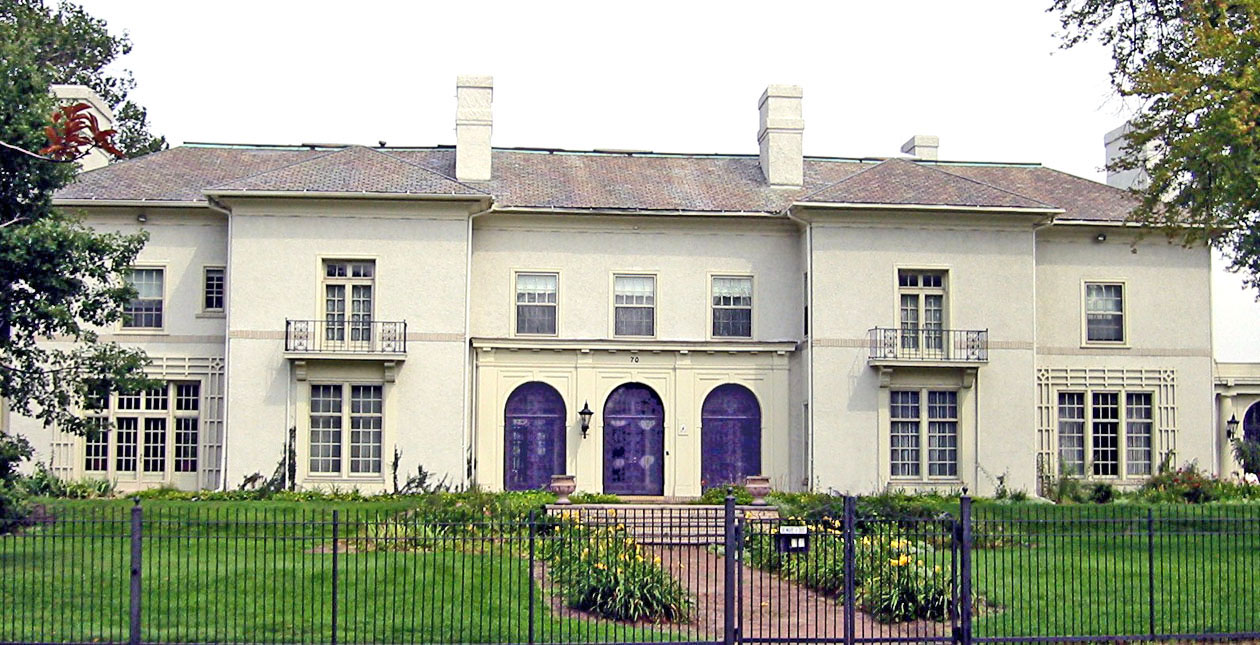

Sebastian Spering Kresge was born on a farm near Wilkes-Barre,
Pennsylvania in 1867. By the end of his teen years, he had acquired whatever
credentials
were
required in that era to become an elementary teacher. However, he did not enjoy
employment in the classroom so, in his early twenties, he became a traveling
salesman providing goods to retail merchants. He was successful, and in the
mid
1880s, invested his savings to purchase a share in two stores—one in
Memphis and one in Detroit—owned by a Mr. McCrory who eventually established
a large and successful chain of stores. Kresge moved to Detroit and took control
of the first Kresge store.
By 1899, Kresge had established his firm and began increasing the number of stores.
In 1912, when he had 85 stores, he established the S. S. Kresge Corporation whose
descendent firms are now a holding company controlling both the K-Mart and Sears
and Roebuck chains. Originally, Kresge limited his prices to five and ten cents,
but during World War I, he raised the price limit to one dollar. Kresge—or
his public relations staff—cultivated an image of frugality.
Supposedly, when he traveled from the Michigan
Central Station, he rode in an
upper berth rather than in a drawing room or private car. Allegedly, he used
the services of Detroit boot blacks when they charged a dime, but when they went
up to 15 cents, he started polishing his own shoes.
Kresge was a generous philanthropist. In 1924, he established the huge foundation
that now bears his name and is now headquartered on West Big Beaver Road in Troy.
During his lifetime he contributed at least sixty million to his foundation.
That foundation now uses funds generated from Kresge’s wealth to strengthen
non-profit organizations that benefit humanity
S. S. Kresge was not frugal when it came to building a fine Boston-Edison home
for his family. The home you see is one the largest and most impressive in Detroit.
The architects—the Cleveland firm of Meade and Hamilton—designed
a
Mediterranean-style villa and, to make it distinctive, selected white stucco
for the exterior. The best time to appreciate the appeal of this home is on a
sunny summer morning. One wonders why S. S. Kresge did not ask Albert Kahn to
design the home. By the time this residence went up at the corner of Boston and
Woodward, Kresge had moved his firm’s offices into a Kahn building on Grand
Circus Park. And Kahn designed the Siegel home to the immediate west of Kresge’s
house. These were very busy years for Kahn and his firm, so he may not have had
time to design a suitable home for S. S. Kresge.
Kresge lived to see the decline of the traditional downtown five and dime, and
the emergence of a new chain of similar stores located in suburban shopping centers—the
K-Mart stores created in 1962. Kresge lived to age 99, but surprisingly,
both
of his parents with their rural backgrounds, lived to older ages.
The contributions of Kresge to Detroit’s architectural wealth merit comment.
The appealing white Kales Building at the corner of Adams and Park in Grand Circus
Park was the first major office building for his firm, although they occupied
only 9 of the 18 floors. It was an empty hulk of a building for more than a decade
in Detroit’s bleakest days, but is an excellent example of the successful
conversion of a long-dormant downtown buildings into residential uses. S. S.
Kresge had Albert Kahn design a much larger but similarly white office building
in
1927. This is the impressive but now basically empty Kresge
Building facing Cass
Park between the new Cass Tech High School and Masonic Temple. Then there is
the most distinctive college building in the city, perhaps, in the state—the
Kresge-Ford Building that graces the campus of the College for Creative Studies
at the corner of East Palmer and John R. William Kessler and his associates designed
this structure in 1975 with expansion in mind. You wonder if Kessler played with
tinker toys as a child when you see this fascinating structure. Kresge foundation
funds also supported the Kresge Art Museum at Michigan State University, the
Kresge Library of the University of Detroit-Mercy Law School and the Purdy-Kresge
social science library of Wayne State University. I suspect that there are several
other Kresge buildings in the Detroit area that I have omitted from my list.
Architects: Frank Meade and James Hamilton
Date of Construction: 1914
Architectural Style: Mediterranean villa
Use in 2007:
City of Detroit Local Historic District: This home is located with the Boston-Edison
Historic District. This district is bounded, approximately, by Edison, Woodward,
Linwood and Glynn Court. The Boston-Historic District is also listed on the State
of Michigan registry of historic districts and the National Registry of Historic
Places.
Photo: Andrew Chandler; July, 2004
Description prepared: February, 2007.